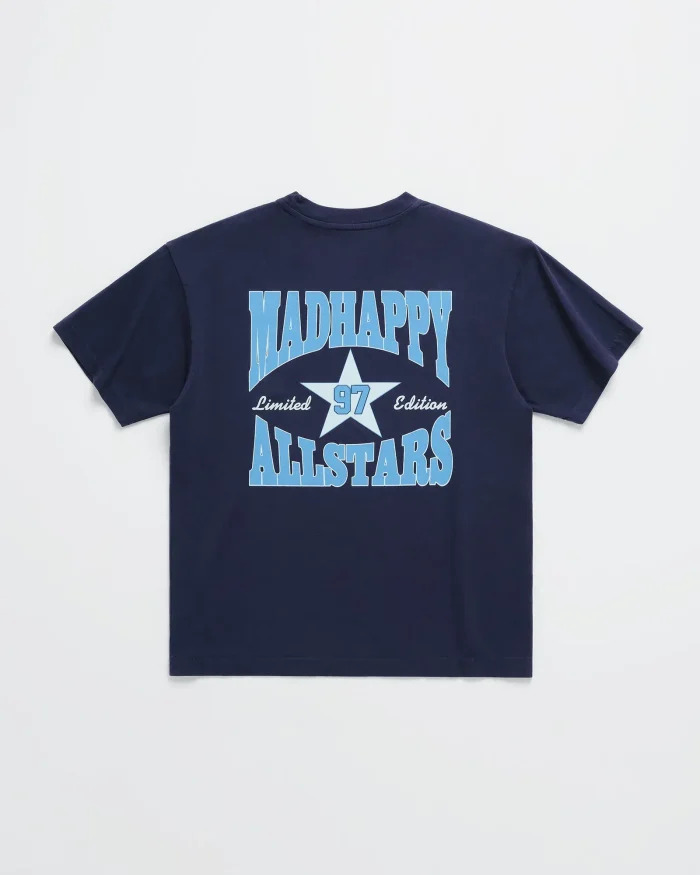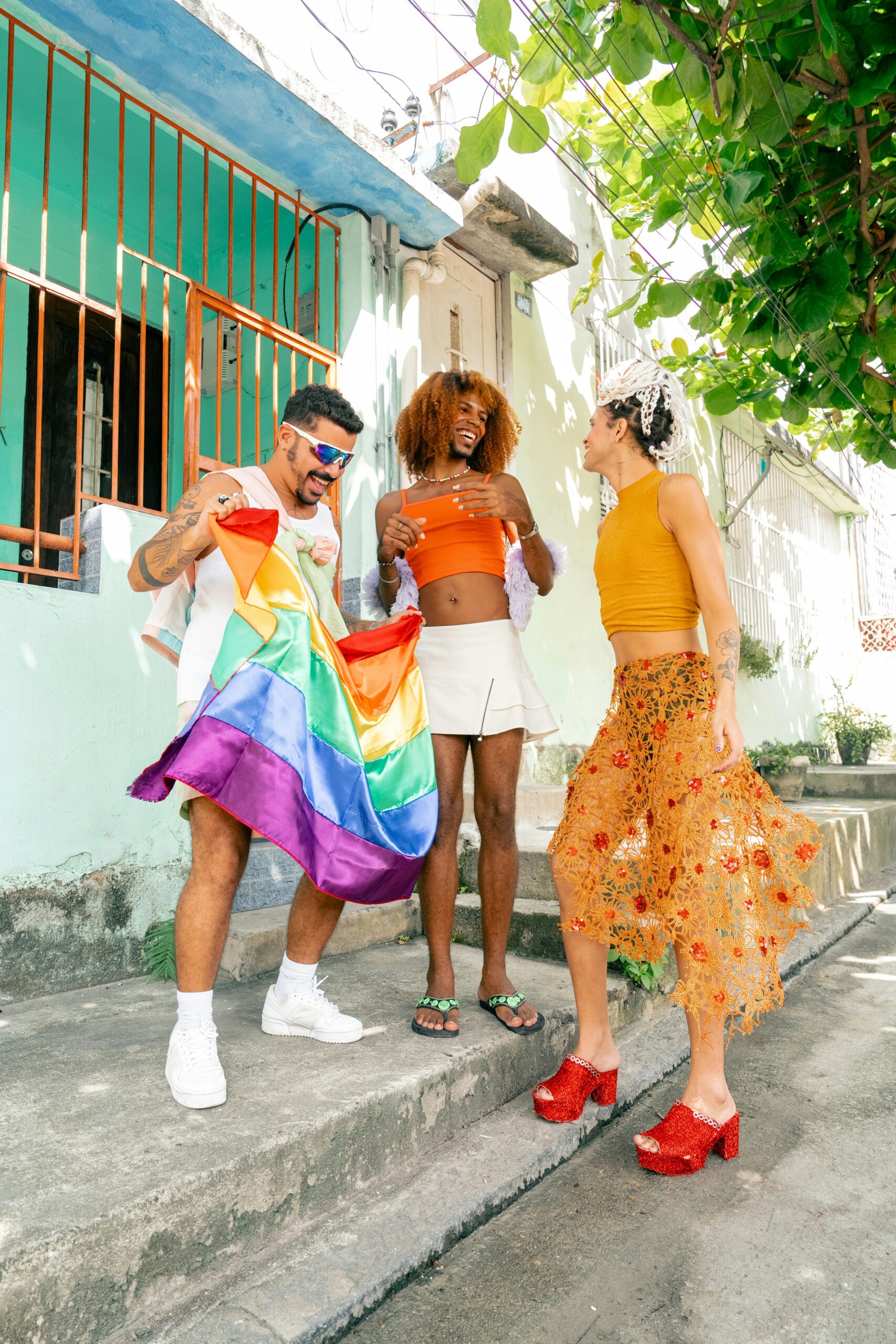In a world where fashion often focuses on aesthetics, luxury, and exclusivity, Mad Happy has emerged as a breath of fresh air. This lifestyle brand, launched in 2017, is more than just a clothing label; it is a movement that fuses fashion with mental health awareness. With its vibrant color palette, uplifting messaging, and community-driven ethos, Mad Happy has carved out a unique space in the industry. But what makes this brand truly special? Why has it garnered such a dedicated following in such a short period? In this article, we delve deep into the origins of Mad Happy, its brand philosophy, and its impact on both the fashion and mental health spheres.
The Birth of Mad Happy: A Vision Beyond Clothing
Mad Happy was co-founded by four friends—Peiman Raf, Noah Raf, Mason Spector, and Josh Sitt—who sought to create something beyond just another streetwear brand. The name itself encapsulates the paradoxical nature of emotions, acknowledging that happiness isn’t a constant state but rather a journey. By embracing both the highs and lows of life, the brand communicates an important message: mental health matters.
The brand was launched with a clear vision—to create a positive dialogue around mental health through fashion. They started small, releasing limited-edition hoodies and sweatpants with simple yet profound messaging. What began as a passion project quickly gained momentum, with people resonating deeply with the brand’s message. Soon, Mad Happy expanded into pop-up shops, collaborations, and even a dedicated mental health initiative.
The Unique Aesthetic: A Blend of Comfort and Positivity
Mad Happy’s designs stand out for their simplicity, bold colors, and uplifting typography. Unlike traditional streetwear brands that often exude an edgy or rebellious vibe, Mad Happy’s aesthetic is rooted in optimism. Soft pastel tones, oversized silhouettes, and cozy fabrics make their clothing not only stylish but also comforting—almost like a wearable form of self-care.
Another defining feature of Mad Happy’s apparel is the inclusion of mental health-related phrases and affirmations. Whether it’s a hoodie that says “Local Optimist” or a tee with “Mental Health Awareness Club,” the messaging is always intentional. These designs aren’t just about looking good; they serve as conversation starters, encouraging people to openly discuss their mental well-being.
The Power of Community: More Than Just a Brand
One of the key reasons for Mad Happy’s success is its strong sense of community. From the outset, the brand has prioritized creating a space where people feel safe and supported. Their pop-up stores are designed to be more than just shopping destinations; they often feature panels, workshops, and interactive experiences centered around mental health.
The brand also fosters connection through its social media platforms. Unlike traditional brands that merely use Instagram or TikTok for promotion, Mad Happy actively engages with its audience by sharing personal stories, resources, and messages of encouragement. This has allowed them to build a deeply loyal customer base that sees Mad Happy as more than just a clothing company—it’s a lifestyle and a movement.
The Local Optimist Initiative: A Commitment to Mental Health Awareness
While many brands incorporate social responsibility as an afterthought, Mad Happy has made it a core part of its identity. In 2020, they launched The Local Optimist, a dedicated mental health initiative aimed at providing education, resources, and support. This platform features blog posts, expert interviews, and personal stories, all designed to break the stigma around mental health.
One of the most impactful aspects of The Local Optimist is its accessibility. Unlike traditional mental health resources that can feel clinical or intimidating, Mad Happy’s platform makes these conversations more approachable. Their casual and relatable tone helps people feel seen and understood, making it easier to engage with the topic of mental health.
High-Profile Collaborations: Expanding the Movement
Madhappy Tracksuit rise to prominence has been fueled by strategic collaborations with major brands and celebrities. From working with global sportswear giant Lululemon to partnering with icons like LeBron James, Mad Happy has successfully bridged the gap between fashion and mental health advocacy.
These collaborations aren’t just about selling products; they are designed to further the brand’s mission. For example, their partnership with Lululemon focused on promoting mindfulness and well-being, while their work with the NBA aimed to bring mental health awareness to athletes and sports fans alike. By teaming up with influential figures and companies, Mad Happy has amplified its message to a much broader audience.
The Business Model: Limited Drops and Exclusivity
A crucial factor in Mad Happy’s success has been its business model. Unlike traditional fashion brands that release seasonal collections, Mad Happy operates on a limited-drop model. Each release features a small batch of carefully curated pieces, creating a sense of exclusivity and urgency among buyers.
This strategy not only boosts demand but also aligns with the brand’s ethos of mindfulness. Instead of encouraging mindless consumption, Mad Happy promotes intentional purchasing. Their high-quality materials and ethical production processes further reinforce their commitment to sustainability and conscious consumerism.
Why Mad Happy Resonates with Gen Z and Millennials
The brand’s core demographic consists largely of Gen Z and Millennials—two generations that prioritize mental health, authenticity, and purpose-driven brands. Unlike previous generations, today’s young consumers don’t just buy products; they buy into values and missions. Mad Happy’s emphasis on emotional well-being, inclusivity, and positivity strikes a chord with these audiences, making it one of the most relevant brands of its time.
Moreover, in an era where social media often fosters comparison and anxiety, Mad Happy provides a refreshing counterbalance. Their messaging reminds people that it’s okay to not be okay and that happiness is a work in progress. This level of authenticity is rare in the fashion industry and has played a significant role in Mad Happy’s widespread appeal.
The Future of Mad Happy: A Movement with Staying Power
Mad Happy’s impact extends far beyond fashion. It has successfully positioned itself as a cultural force that is reshaping the way we talk about mental health. As awareness around mental well-being continues to grow, the brand is well-positioned to expand its influence even further.
Looking ahead, there is immense potential for Mad Happy to branch into new areas—whether that means expanding their product line, launching wellness-focused events, or even collaborating with mental health professionals to create more substantial resources. Given their track record, it’s clear that Mad Happy is here to stay.
Madhappy Hoodie is not just a streetwear brand; it is a revolution in the way fashion intersects with mental health. By prioritizing positivity, community, and awareness, the brand has built a loyal following that extends far beyond clothing. In an industry often driven by trends and exclusivity, Mad Happy stands out as a beacon of inclusivity and purpose.
As society continues to embrace mental health as an essential conversation, Mad Happy’s message is more relevant than ever. Whether through its apparel, collaborations, or The Local Optimist initiative, the brand is proving that fashion can be more than just fabric—it can be a powerful vehicle for change. And in a world that sometimes feels overwhelming, Mad Happy is a reminder that optimism and connection can make all the difference.


